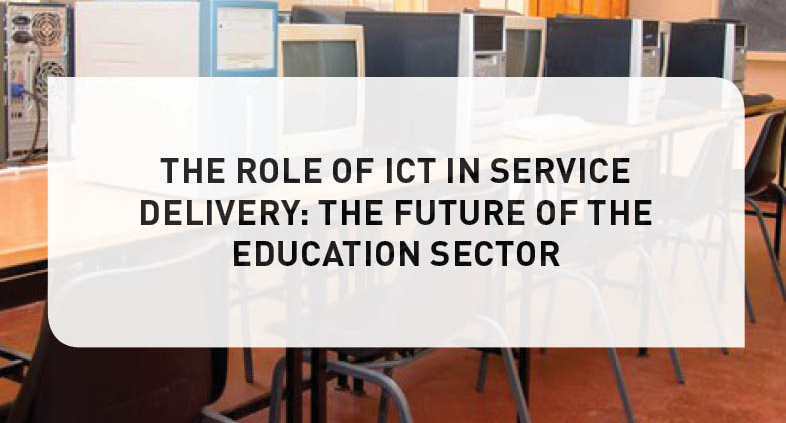The Zambian Government through the Seventh National Development Plan (7NDP) have identified the important role of Information and Communication Technology (ICT) in service delivery as part of its e-governance agenda. According to the 7NDP, ICTs are a catalyst for socio-economic development as they promote competitiveness and are an enabler of good governance. Though ICTs over the years have been adopted slowly by Government into the e-governance agenda compared to other countries in sub-Saharan Africa, Zambia has focussed on gradually developing ICTs to spur growth in the digital economy through technologies such as mobile phones, broadband internet and computers which have changed the way people work and access services in the Health, Agriculture, Education and Financial sectors. In the wake of the COVID-19 pandemic, teachers and learners have had to adapt to a world of almost universal online education that solely relies on ICT infrastructure as nearly 94% of all learners have faced closures and disruptions to their school calendar.
In the education sector, Zambian schools have over the years adopted the use of computers, projectors, photocopiers and other related ICT equipment by both teachers and learners. The adoption of ICTs in the sector has occurred on two levels. The first has been the introduction of computer studies as part of the curriculum for learners as a subject and the second level was the introduction of ICTs training in tertiary institutions for teachers as a way of facilitating for better knowledge transfer to learners.
One of the objectives of using ICTs in the education system in Zambia has been to improve and expand access to education, training and research but this process has not been without challenges as schools acquire and roll-out use of ICT equipment in various levels of teaching and learning. There are a large number of initiatives that are using ICTs in an attempt to improve the quality of school education. Whereas, children in urban areas have more access to laptops and the internet in schools and at home, children in rural areas are faced with a severe digital divide exacerbated by poor access to electricity and poverty. Some of the challenges this process has faced stem from inadequate computers for use among learners leading to a higher computer-learner ratio, lack of infrastructure to support the delivery of subjects and in some instances other schools use semi-functional computer laboratories. Another huge challenge is that of internet connectivity especially in rural areas while in urban areas the sustenance of the internet services is difficult due to budget constraints. Zambia’s current mobile broadband penetration currently stands at 51.3% while fixed internet penetration is 0.5% (ZICTA Q1-2020)
In order to actualise the e-governance agenda of improved service delivery in the education sector, the Government is urged to prioritize the formulation and implementation of an ICT policy which will guide implementation of efforts to improve ICTs in schools such as funding for ICTs equipment and infrastructure as well as teacher training for better delivery of subjects in schools.
In conclusion, the use of ICTs in the education sector may not be the solution for all the challenges that are currently faced in the education sector, many challenges still remain in ensuring universal access to education. However, the continued implementation of ICT education in both rural and urban areas in Zambia presents a great opportunity for the nation to have greater access to information and communication platforms that can foster new and better skills for the young generation and this will enable Zambia to make use of, contribute to and create international information platforms. In order for Zambian schools to derive the benefits that come with the use of ICTs in schools, serious financial commitment and implementation frameworks are required especially for girls and other vulnerable groups to guarantee them successful ICT skills acquisition and quality education in order for them to be easily competitive in the global labour market.
This article is an extract from a PMRC Analysis titled; Implementation Status and Challenges of ICTs in Zambian Schools. To access the analysis visit www.pmrczambia.com




